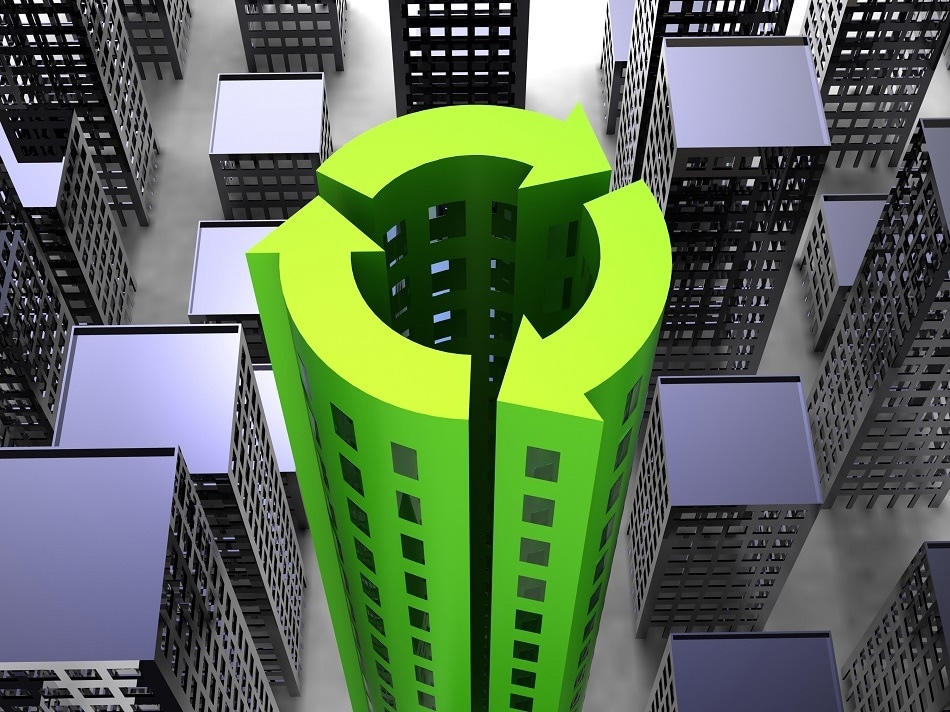
Shutterstock.com/dandesign86
Green buildings are designed and constructed around the principle of preserving and enhancing the natural environment rather than affecting it adversely.
Green buildings are designed to be sustainable, by catering to the long-term interests of social and environmental necessities rather than the immediate urgent calls of cost-cutting and speedy construction.
The basic principles of sustainability in this field include reduced energy expenditure, greater energy efficiency, cleaner indoor environment, better public health, and positive community impact.
To evaluate the sustainability of green buildings, proof is necessary in the form of scientific reports that support the long-term efficacy of this building philosophy, as well as helping to market it in line with Green Building guidelines.
What is LEED in Green Building?
The Leadership in Energy and Environmental Design (LEED) Green Building Rating Program begun in 1998, and was designed to provide ratings to buildings based on their green practices. It covers five aspects, namely, the choice of site, saving water, saving energy, material conservation, and indoor environment. A sixth category gives credit for innovation and design.
A building is LEED-certified once it gets 40 or more points, but as many as 110 points can be gained. The strength of this rating system is that it is simple for builders and contractors to understand. Secondly, it appeals to the competitive streak in almost all humans to achieve better than others. Since points can be gained by a clear-cut strategy, following defined rules, it is natural that building teams would strive to excel by gaining as many points as they can, to achieve the coveted Platinum or Gold category, rather than just being certified or Silver.
A third reason for the success of LEED rating is its consumer-friendly rating system since a LEED certification implies theoretical superiority to at least 75% of existing buildings in terms of green design.
The promise of specific benefits is also appealing, both in the market and in terms of energy saving and environmental benefits. Rigorous cost-benefit analyses are expected to turn up increasingly convincing reasons for this concept to be carried forward on a wider scale.
Sustainability in Green Buildings
The following section deals with certain selected aspects of sustainability achieved by green buildings:
Sites
Siting is an important consideration, with points being given for avoiding environmentally sensitive land, brownfield development, proximity to workplaces, parking facilities, stormwater management, and minimal development footprint, among others.
Energy Saving
Green buildings incorporate efficient energy utilization techniques, including solar panels, smart grids for electricity and power-saving devices. Thus they both reduce energy costs and produce on-site renewable energy.
Using natural ventilation and admitting sunlight to save on energy consumption for air conditioning and lighting in up to 90% of occupied spaces saves energy and enhances air flow.
Water Saving
The consumption of water in green buildings can be reduced by 50% or more by the following measures:
- Using flow restrictors to reduce wastage at taps
- Use sensors or timers to optimize water flow in public facilities
- Use water-saving measures like dual flush cisterns
- Keep plumbing water pressures as low as possible
- Install water reclamation systems to re-use gray water for toilets, irrigation and cleaning
Indoor Air Quality
People are indoors for 70% of the time on average, which means air quality is crucial for their wellbeing. This means providing good ventilation, filtration to remove pollutants as required, isolating sources of pollution, as well as avoiding the use of materials which emit toxic emissions, as in furnishing materials. If certain pollutants are essential, such as pesticides, their use should be scheduled at times when the building will be vacant overnight, or for a few days, such as on weekends.
Emissions from furnishings may be reduced by removing them from their packaging outside the building and allowing them to sit in a clean dry secure place for a few days before being installed.
Evidence-based Sustainable Green Design
Some tangible benefits that are already observable include:
- Thousands of dollars saved by recycling over half of the construction and demolition debris in the Ridgehaven building, San Diego
- Prevention of off-gassing indoors leads to lowered asthma symptoms in children in Dorchester, MA
- 30% reduction in energy costs in green buildings
- Reduced design, building and operating costs with integrated green building designs in Seattle and Dorchester, MA
- A 7% improvement in worker productivity and health with a potential worth of millions of dollars
- 7% reduction in water demand and wastewater production after a flush water reduction program in New York City
- Increased economic development in Boston, MA
Sources
Disclaimer: The views expressed here are those of the author expressed in their private capacity and do not necessarily represent the views of AZoM.com Limited T/A AZoNetwork the owner and operator of this website. This disclaimer forms part of the Terms and conditions of use of this website.